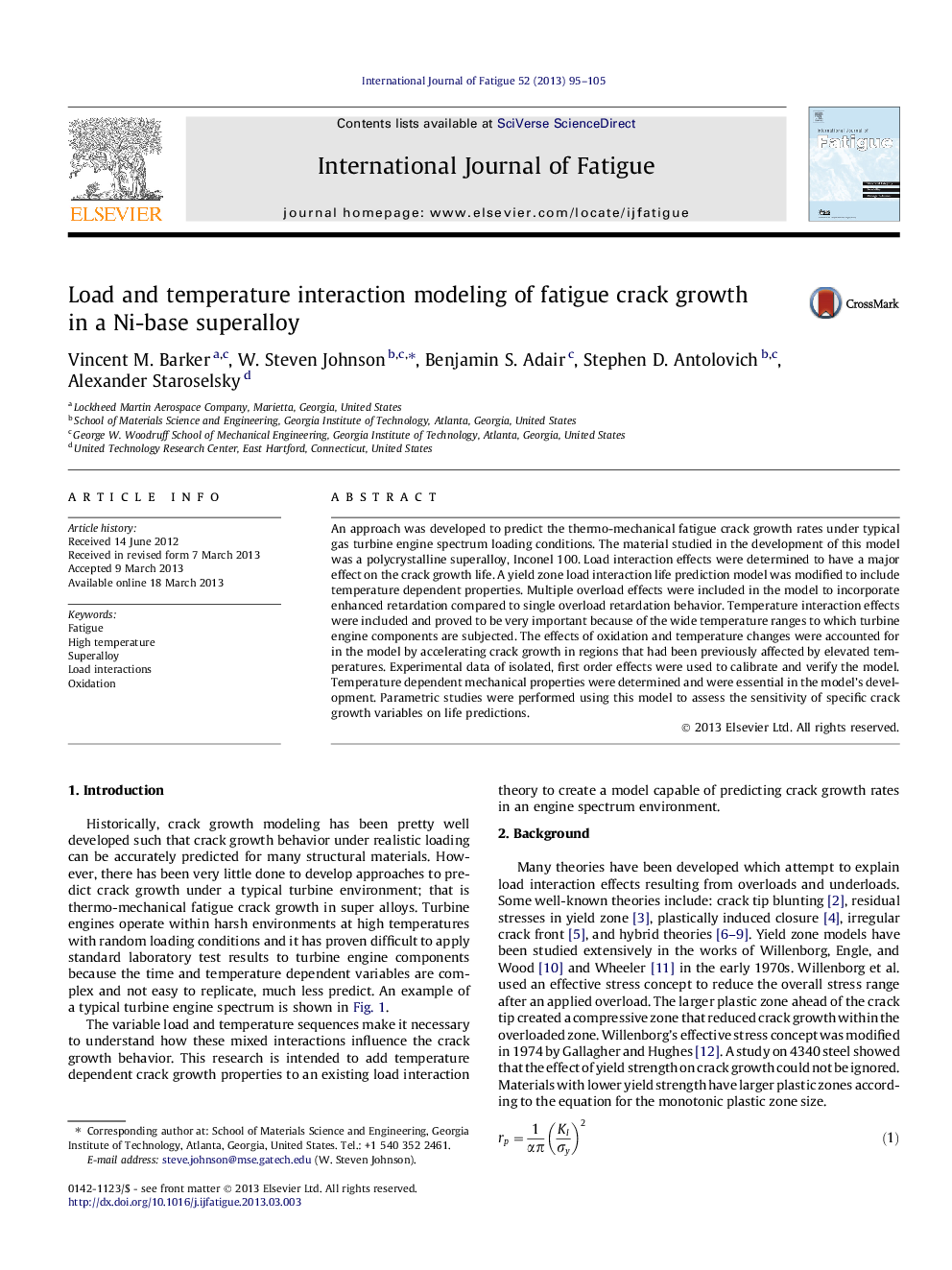| Article ID | Journal | Published Year | Pages | File Type |
|---|---|---|---|---|
| 777693 | International Journal of Fatigue | 2013 | 11 Pages |
•The paper presents an approach to predict the crack growth in superalloys subject to both thermal and mechanical loadings.•Both experimental data and modeling predictions are presented for TMF crack growth in a superalloy.•Crack growth is very temperature history dependent.•Examples are given for potential model applications.•There are virtually no other papers in the open literature that has tackled this very difficult but important problem.
An approach was developed to predict the thermo-mechanical fatigue crack growth rates under typical gas turbine engine spectrum loading conditions. The material studied in the development of this model was a polycrystalline superalloy, Inconel 100. Load interaction effects were determined to have a major effect on the crack growth life. A yield zone load interaction life prediction model was modified to include temperature dependent properties. Multiple overload effects were included in the model to incorporate enhanced retardation compared to single overload retardation behavior. Temperature interaction effects were included and proved to be very important because of the wide temperature ranges to which turbine engine components are subjected. The effects of oxidation and temperature changes were accounted for in the model by accelerating crack growth in regions that had been previously affected by elevated temperatures. Experimental data of isolated, first order effects were used to calibrate and verify the model. Temperature dependent mechanical properties were determined and were essential in the model’s development. Parametric studies were performed using this model to assess the sensitivity of specific crack growth variables on life predictions.
